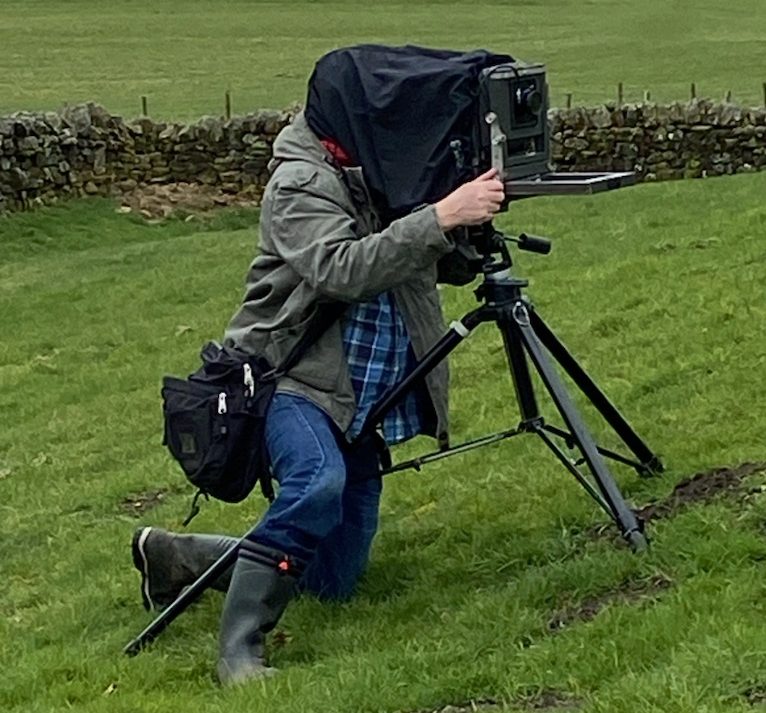 I blogged some time ago about creating a table and graph for the reciprocity adjustments for Ilford FP4+, which give some finer gradations than the table included in Ilford’s data sheet.
I blogged some time ago about creating a table and graph for the reciprocity adjustments for Ilford FP4+, which give some finer gradations than the table included in Ilford’s data sheet.
Since then Ilford have updated their data sheets. Instead of providing the same graph for all of their films, they now produce an equation for each film. The new data sheet can be found here.
The equation is expressed as the measured exposure time, raised to the power of 1.26 for FP4+. If you are using another Ilford film, check the link in the previous paragraph.
Now the calculator on my phone doesn’t have the key necessary to perform that calculation so I decided to update the chart and table from my previous blog post. Here’s the table:

You can see that the new equation gives significantly shorter exposure times than the old graph suggested – which is good news, unless you specifically want long exposure effects.
The graph below gives a visual indication of the differences between the old and new methods:

Of course, Ilford’s equation should only be considered a starting point – you might prefer longer or shorter exposure times to get the effect you want for a particular image or to match with the characteristics of a favourite developer.
Finally, here’s the table I actually carry around with me which gives the adjustments needed for the range of films that are in my freezer right now:


Hello Kevin
On my iPhone if I put the calculator in landscape orientation the scientific calculator will appear.
Thanks for posting this info.
LikeLike
That’s a useful table Kevin many thanks . I regularly shoot long exposures in large format and currently trying to get to know FP4 and fomapan100 intimately with xtol and perceptol. Previously have wasted shots with casual calculations in the field for correct exposures of both. Although just purchased some delta 100 to try in 4×5. I will settle down one day soon with a favourite film dev combo.
LikeLike
So I just set the ISO on my meter to 1600 and use your conversion chart yet yes I’m completely new at this but googling all the charts I find have no starting ISO rating? Is it 125 the one on the film box,80 the E.I number for FP4 or 100 the other advised E.I number I’ve seen in my Large format book by Steve Simmons
LikeLike
Daniel, there are two different issues implied by your comment. The first is reciprocity failure and the second is film speed.
Reciprocity failure is the tendency of most films to require a non-linear increase in exposure for longer exposures. It is is independent of film speed. The starting point is the expsoure time that your meter suggests. For example if your meter suggests an exposure time of 4 seconds, and you are shooting FP4+, you should actually expose for 6 seconds. This is true regardless of which EI you set on the meter.
As regards film speed, I suggest that a beginner to film photography should set their meter at the box speed, until they have some practice and have a reason to use a different EI.
Setting an EI of 100 or 80 for FP4+ would make only a modest difference to the results you achieve. Setting an EI of 1600 for FP4+ would be very unusual and probably not advisable. If you really need to shoot at 1600 – for example in low light, handheld, then Ilford HP5+ would be a more appropriate choice. It has a box speed of 400 but many users “push” the film to and EI of 800 or 1600. “Pushing” means that you are effectively underexposing the film, and then developing for longer to compensate for the underexposure. If you are sending the film to a lab for developing, you will need to tell the lab the EI you have used so that they can adjust the developing time accordingly.
LikeLike
Well, all I can say is that YOU are much more helpful than Ilford! Thanks very much for the charts and curves, as a visual thinker, they make much more sense to me.
LikeLike
Thanks Kevin. The formula for FP4+ is much simpler than the one given for Fomapan 100. I use a pinhole camera with 4×5 Fomapan and have just started with the FP4+ . This will help no end. Incidentally I have shortened my times with the Fomapan particularly when the exposures go beyond a minute on the meter (14 minutes adjusted time!). The longer exposures just get ridiculous and I have never had a totally spoiled negative.
LikeLike